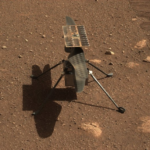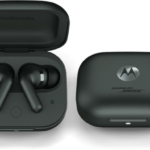
As the Steam Deck’s one-year anniversary approached, I found myself itching to write a reflection on my past 12 months with it. Though I love the gaming device and use it as much as my Nintendo Switch, I initially found my feelings skewing more negative than I expected. Part of that may have been a little reactionary, as I’ve developed a pet peeve in the past year: hearing people who work in games tout it as a “life-changing” device. Sure, it’s life-changing for anyone whose job hinges on having easy access to games, but some of the Steam Deck’s more frustrating quirks make it harder to recommend to a casual player.
My perspective changed when I chatted with Jacob Roach. Digital Trends’ Computing senior staff writer. As a PC gamer, his read on the system was entirely different from mine, focusing on game-changing features that I haven’t gotten much use out of. What became clear from that conversation is that the Steam Deck is a very different device depending on whether you’re coming at it from a PC or console background.
Any thorough reflection on the Steam Deck’s first year would need to tackle the device from both angles, breaking down all its techie revelation and casual frustrations. That’s exactly how Jacob and I agreed to approach the device’s anniversary. This is a tale of two entirely different Steam Deck experiences — a duality that we feel more honestly reflects the complicated nature of such a new and innovative piece of technology.
The console gamer
While I’m taking the role of a console gamer in this argument, I’m not allergic to PC gaming. I play plenty on my rig, but I try to avoid it as best as I can. That’s because of a few factors. For one, I’d just rather sit on my couch and play something on my TV than sit at the same computer I use for work. But more importantly, I can’t stand the frustration that comes from tinkering with settings to get a game running right. I don’t have the most up-to-date parts, so getting a new release to function optimally can be a song and dance I just don’t want to deal with. I’d rather just load a game up and have it run on tech it’s optimized for.
When the Steam Deck was first announced, I was excited about the possibility of a more streamlined PC gaming experience akin to a Nintendo Switch. What I quickly learned in the past year is that the device is every bit as temperamental as my rig, if not more so.
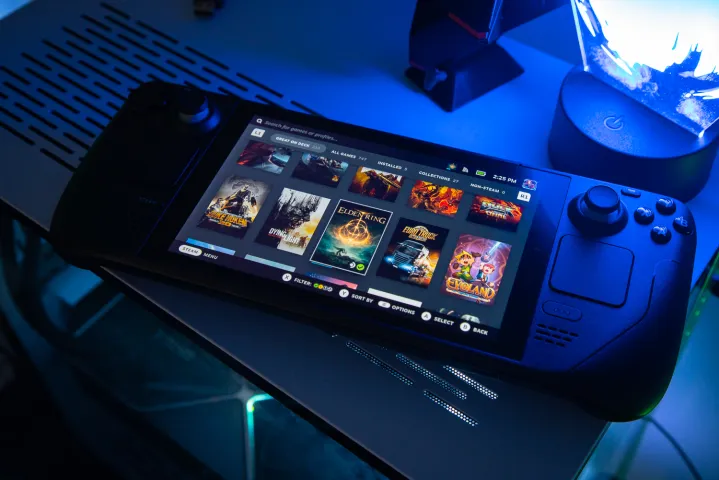
To be fair, that’s the appeal of the device for folks like Jacob. Few gaming consoles really give players the power to meaningfully fiddle with their hardware settings in the way a PC does. Something like the PlayStation 5 is a plug-nd-play affair — if a game runs poorly on it, there’s not much you can do to fix it. Steam Deck offers much more flexibility at a system level, giving players the tools they need to boost performance, conserve battery, or anything they’re looking to customize. There’s even a performance overlay that lets players see things like frame rate running in real time — a tool I use a lot when playing Vampire Survivors.
Those are the aspects that make the Steam Deck a truly special device, and I’m glad they’re present, even if I don’t use them much. What I’m less enthused with, however, is how unpredictable the device can be even a year after launch. I still remember the first time I tried to travel with my Steam Deck, excitedly taking it on the subway for the first time. I had just downloaded Soundfall and was looking forward to firing it up. I loaded the app and then … nothing happened. I simply couldn’t boot the game and wouldn’t be able to until I returned home and reconnected to Wi-Fi. When I did get it working, I found that all of its cutscenes were replaced with color bars.
Even a year later, you have to go into it knowing that the hardware itself is a constant work in progress.
That kind of experience has been common for me in the past year. I’ve encountered a string of crashes, hardware slowdowns, and even game freezes that have temporarily bricked the device. In between that, I’ve also dealt with an unpredictable battery that can sometimes die in an hour or go from 10 to 0% in an instant. I’ve had my Steam stats decimated as my Deck keeps counting game hours even when the device is in sleep mode. Downloads have gone awry because the system went to sleep, halting progress. Don’t get me started on its finicky Linux browser either, which is only made more frustrating to navigate because the command to call the device’s on-screen keyboard doesn’t always work.
That’s not to mention the struggles I still have with game compatibility. When games run perfectly on the device, it’s everything I wished it would be. I had several magical moments in the past year where I’d load up a game like Rogue Legacy 2 or Teardown, which were only available on PC at the time, and play them end to end with zero problems. Other times, I’d load up a verified game like Strange Horticulture and find that miniscule text sizes made me wish I had just played on PC.
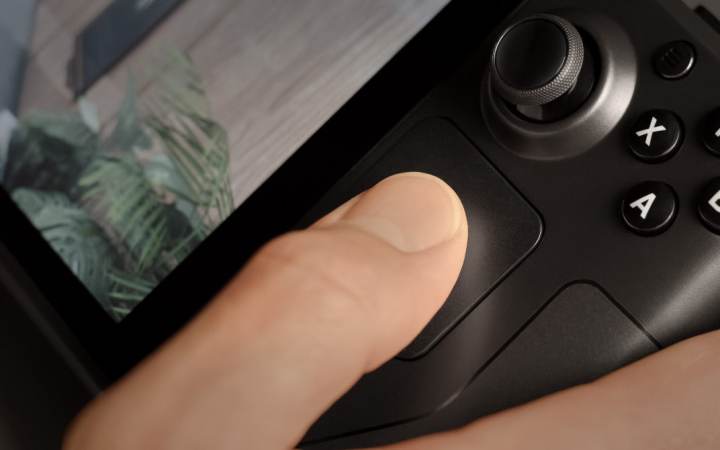
Verification remains spotty too, especially with AAA games. When Marvel’s Midnight Suns and Need for Speed Unbound launched last December, I figured I’d pick one up for my holiday travel. A little research quickly told me that neither functioned well on the device, leaving me to instead consider a handful of indies that could run on a Nintendo Switch. That’s only going to be more of a problem as more games ditch a cross-gen approach and begin optimizing for PS5, Xbox Series X, and higher-end PCs. Just look at Returnal, which can only run on the device with some major compromises to frame rate and resolution.
As a piece of hardware, I can’t say that Steam Deck is ever my first choice for games it can run. If I have the option between playing on my Switch OLED or Steam Deck, I’ll always go with the former. It’s smaller, less heavy, and has a much better display. What I lose in power and customization, I gain back in comfort and reliability. My Steam Deck is what I go to when I don’t have another option, making it my go-to device for PC exclusive indies like Pizza Tower. It’s not even my go-to emulation box at present; that honor currently goes to the much sleeker and easier to use Razer Edge.
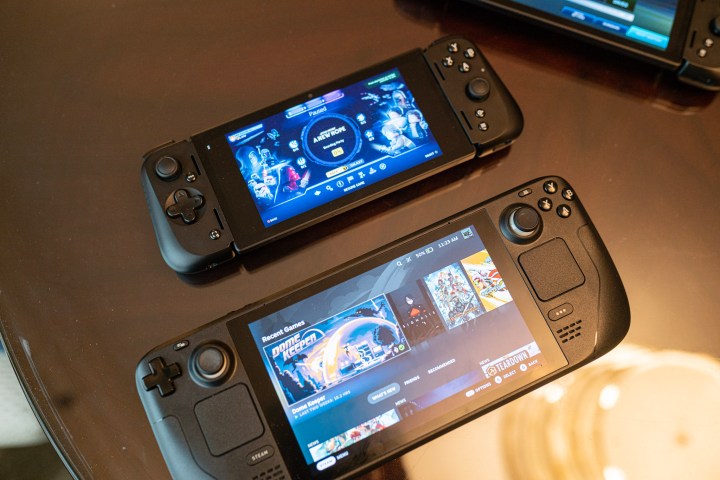
I’m piling on my grievances here, but don’t get me wrong: I do genuinely love my Steam Deck. I use it frequently and I cherish how it changed my relationship to PC gaming. I had a revelatory moment last summer where I took it with me on vacation to Cape Cod, fired up Marvel’s Spider-Man Remastered on it, and played it without a hitch. Even though something like Returnal isn’t optimal on Steam Deck, the fact that I can play it at all there is impressive (my Switch would die even just thinking about it). Those moments are still magical and make it easy for me to recommend the device to people who play a wide variety of games.
But when I talk to more casual gamers, my recommendation comes with some heavy caveats. Even a year later, you have to go into it knowing that the hardware itself is a constant work in progress. You also can’t grab one expecting it’s going to play every new release and support future ones for years to come. I’m still largely playing what works on it, rather than what I’d like to play. It’s an extension of my PC experience in that sense: a chunky handheld laptop that I’ll be happy to upgrade as soon as there’s a sleeker model available.
Though if you’re a lifelong PC gamer, that’s exactly the point, my colleague argues. ~ Giovanni Colantonio, gaming section lead
The PC gamer
The Steam Deck is a device that transforms depending on what expectations you bring into it. If you’re looking for a Nintendo Switch that can run PC games, you’ll be turned off by the rough edges and stream of seemingly useless features. On the other hand, if you come from a PC background where troubleshooting is just part of the process, the Steam Deck is a dream come true. I fit in the latter camp.
I assumed I would use the Steam Deck as a way to get an extra hour in Elden Ring before bed or cross some collectibles off my list in Horizon Zero Dawn in-between longer play sessions, but that’s not how I use it. It’s a separate device that I use to whittle down the endless catalog of indie games I’ve picked up over the years, as well as smaller, bite-sized experiences that feel more at home on a handheld than they do on my beefy Alienware 34 QD-OLED monitor. I enjoy games like Vampire Survivors, Signalis, Domekeeper, and Chained Echoes, but my buying decision behind them largely hinged on the Steam Deck. I probably wouldn’t have played these games otherwise.
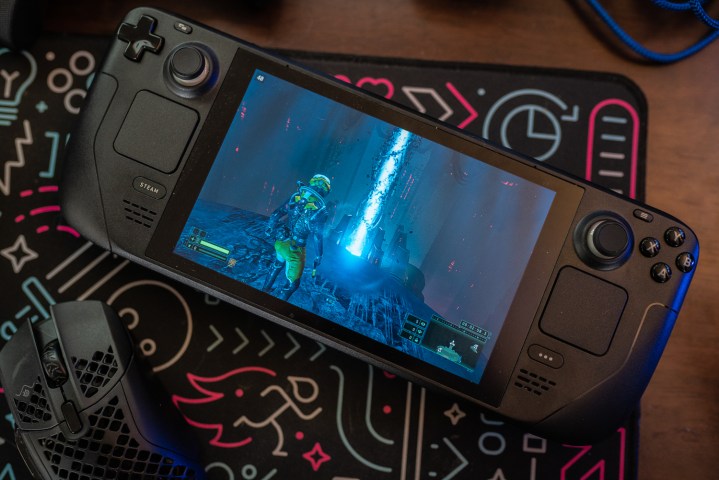
That’s the new stuff, but I have a long backlog of indie games in my library as well — Darkest Dungeon, Blasphemous, Fae Tactics, and Rivals of Aether, to name just a few I’ve recently played. All of these games are available on Nintendo Switch and every other console, for that matter, but it’s hard to overstate the comfort of keeping my playtime, achievements, and progress all under one roof. I have this lingering feeling that my progress on other devices somehow doesn’t count — after all, I spend nearly all my time playing games on a PC. If you fit in that boat, with a massive Steam library and little interaction with traditional consoles, a Steam Deck makes sense.
As mentioned, there are games I never would have played without the Steam Deck. EmuDeck is an all-in-one emulation solution that can bring any platform (and I mean any platform) into your Steam Deck library. Some of my favorite gaming experiences over the past year, including playing Castlevania: Dawn of Sorrow and trying my hand at randomized Pokémon runs, would not have happened if I didn’t own a Steam Deck.
The lack of guardrails means you’re free to basically do anything you want.
But playing games I already own on the go isn’t the only reason I’ve gotten so much mileage out of the Steam Deck. It’s a full PC, an obvious use that’s all too often ignored when making comparisons to the Nintendo Switch and devices like the Razer Edge. Consider the fact that a basic Chromebook will run you between $300 and $400, and the Steam Deck starts to look like a damn impressive value. Hook it up with a cheap Amazon dock and a few peripherals, and you can easily use it to browse the internet, watch YouTube videos, and even experiment with the large (but usually tedious) swath of apps available on Linux.
I won’t pretend Linux isn’t the elephant in the room, though. You can install Windows on the Steam Deck to access a larger range of apps, but this device is clearly intended to run with Valve’s custom version of Linux. The Steam Deck isn’t a replacement for a Windows computer, but basic tasks like browsing the internet are fair game. Linux isn’t for the faint of heart, but basic necessities like a web browser and email app are just a few clicks away (and let’s be honest; most applications you need are available in a browser these days anyway).

I appreciate Valve’s openness on the Linux front, too. Not everyone wants to fuss around with endless tweaking to the settings and mods that come from lengthy forum posts, but some people do (including myself, if that wasn’t clear). The Steam Deck’s complexity brings with it a larger range of options that aren’t available on other devices. The lack of guardrails means you’re free to basically do anything you want. For many, that’s a weakness. For some, it’s an exclusive strength.
It hasn’t always been perfect, though. A fixable but annoying battery bug means my Steam Deck will sometimes die within a few minutes, the UI will occasionally crash and restart, and sometimes my Steam Deck will queue up dozens of updates, none of which are actually updates. Even with those issues, the Steam Deck has never presented problems worse than a typical Windows gaming PC, and considering its many strengths, it’s a revolutionary device for a PC gamer. ~ Jacob Roach, Computing senior staff writer
Finding common ground
The dueling perspectives here paint a full picture of the Steam Deck experience, but perhaps more importantly, they outline a difference in thinking between console and PC gamers. I want a hassle-free experience when I sit down to play a video game. With the limited time I have as is, I don’t want to spend extra hours researching what games will work and then tinkering with settings to optimize it so my battery doesn’t die in less than two hours. I want to spend my precious moments of free time in a game, not in menus.
For Jacob, though, that tweaking is very much part of the experience. Customizing a game to work just the way he likes is part of the ritual, and the Steam Deck is perhaps the only gaming system to ever make that possible. Friction is an important part of the experience because it means the hardware can be molded. While I have gripes about the device, I find myself in full agreement with Jacob’s assessment. The Steam Deck gives power back to the player.
For that reason, I think it’s fair to say that the Steam Deck’s first year has been a rousing success, even with some quirks. There’s still work to be done to make the device more reliable, both in its hardware and Valve’s game verification process, but there’s still nothing on the market that matches what it offers. It’s a genuine revolution for portable gaming, and I’m happy to be there for the start of that journey, bugs and all.
Editors’ Recommendations


